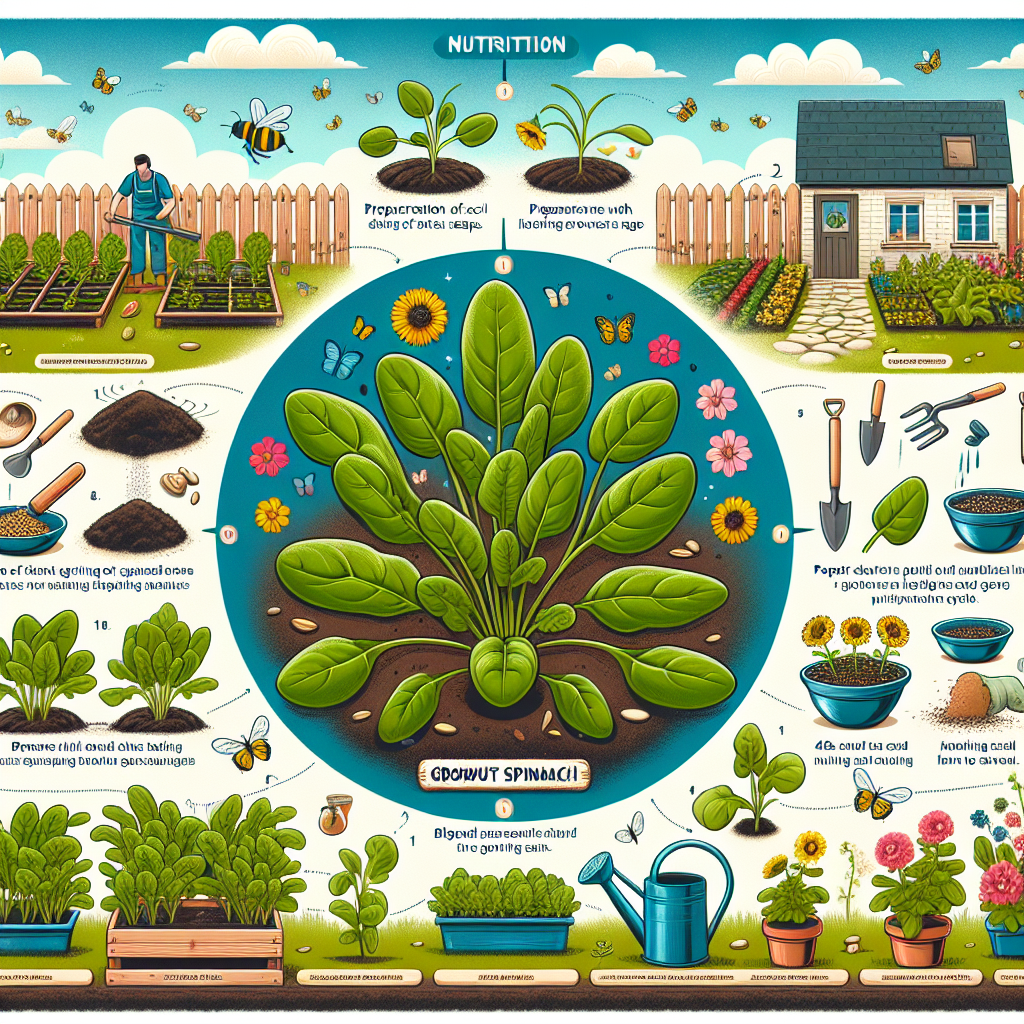A Guide to Growing Nutritious Spinach in Your Home Garden
Spinach is a nutrient-packed leafy green vegetable that is not only delicious but also easy to grow in your home garden. It is rich in vitamins A, C, and K, as well as iron, calcium, and fiber. Whether you are an experienced gardener or a beginner, growing spinach can be a rewarding experience that allows you to enjoy fresh, homegrown produce throughout the year. In this guide, we will walk you through the process of starting your own spinach garden at home.
Choosing the Right Variety of Spinach
Before you begin growing spinach in your garden, it is important to choose the right variety for your needs. Spinach comes in different types such as savoyed (crinkly leaves), smooth-leafed (flat leaves), and semi-savoyed (partially crinkled leaves). Each variety has its own unique characteristics and flavors. Some popular varieties include Bloomsdale, Baby’s Leaf Hybrid, Giant Noble, and Space.
Preparing the Soil
Spinach thrives in well-drained soil that is rich in organic matter. Start by clearing any debris or weeds from the area where you plan to grow your spinach. Loosen the soil using a garden fork or tiller to ensure proper drainage and root penetration. Add organic compost or well-rotted manure to improve fertility and provide essential nutrients for healthy growth.
Sowing Seeds
Spinach can be grown from seeds or seedlings. If you choose to start from seeds, sow them directly into the ground at a depth of half an inch. Space the seeds about two inches apart in rows that are 12 inches apart. Cover the seeds with soil and gently pat it down to ensure good seed-to-soil contact.
If you prefer using seedlings, start them indoors four to six weeks before the last expected frost date in your region. Transplant the seedlings outdoors when they have developed at least two sets of true leaves. Space them accordingly, ensuring adequate room for growth.
Watering and Fertilizing
Spinach requires consistent moisture to grow properly. Keep the soil evenly moist, especially during dry spells or hot weather. Avoid overwatering to prevent diseases such as root rot. Water deeply and allow the soil to dry slightly between watering sessions.

Fertilize your spinach plants with a balanced organic fertilizer about three weeks after sowing or transplanting. Follow the instructions on the fertilizer package for proper application rates. Adding a layer of compost around the plants every few weeks can also help provide essential nutrients.
Managing Pests and Diseases
While spinach is generally a resilient plant, it is susceptible to certain pests and diseases. Aphids, slugs, snails, and leaf miners are common pests that can damage your plants. Monitor your garden regularly for signs of infestation and take appropriate measures, such as using organic pest control methods or introducing beneficial insects like ladybugs.
To prevent diseases like mildew or leaf spot, avoid overhead watering which can promote fungal growth. Ensure proper airflow around the plants by spacing them adequately. If necessary, use organic fungicides as a preventive measure.
Harvesting Spinach
Spinach leaves can be harvested at any stage of growth depending on your preference. Baby spinach leaves are tender and mild in flavor while mature leaves are more robust with a slightly bitter taste.
Start harvesting outer leaves when they reach about four to six inches in length. Use a sharp knife or scissors to cut off individual leaves close to the base of the plant. Regularly harvesting outer leaves encourages new growth from the center of the plant and prolongs its productivity.
Storing Spinach
Freshly harvested spinach can be stored in the refrigerator for up to a week if kept in a plastic bag with air holes to maintain humidity levels. Alternatively, you can blanch and freeze spinach for long-term storage. To do this, briefly immerse the leaves in boiling water for two minutes, then cool them quickly by plunging them into an ice bath. Drain well and pack into airtight containers or freezer bags.
In conclusion, growing spinach in your home garden is a rewarding endeavor that allows you to enjoy freshly harvested, nutrient-packed greens throughout the year. With the right variety selection and proper care, you can have a bountiful harvest of delicious and nutritious spinach right at your fingertips. So, roll up your sleeves, get your hands dirty, and start growing your own spinach garden today!














